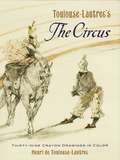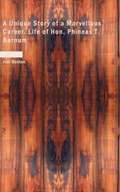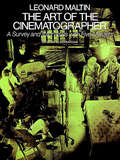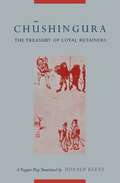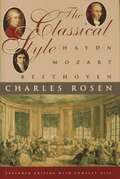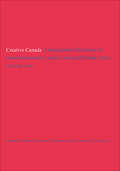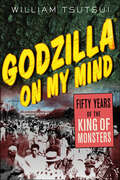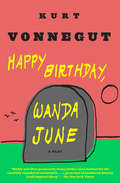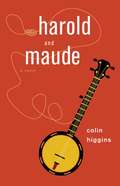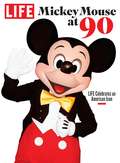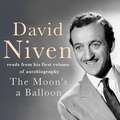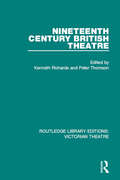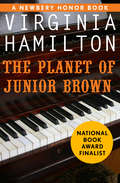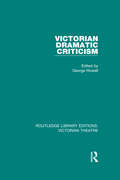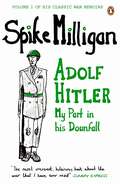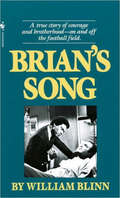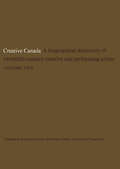- Table View
- List View
Toulouse-Lautrec's The Circus: Thirty-Nine Crayon Drawings in Color (Dover Fine Art, History Of Art Series)
by Henri de Toulouse-LautrecA bareback rider's skirt ripples in the breeze, an acrobat bends his muscular limbs into a handstand, and a poodle obeys a clown brandishing a whip. The circus is in town! These kaleidoscopic visions from under the big top offer audiences a series of post-Impressionistic sideshows, courtesy of thirty-nine brilliant crayon drawings in the distinctive style of Toulouse-Lautrec.These scenes took place far from the artist's customary haunts, the bars and cafes of Montmartre. While Toulouse-Lautrec was at the height of his artistic powers, he was compelled to undergo treatment for alcoholism at a country clinic. Seeking relief from his forced confinement, he sketched vignettes from a local circus troupe's rehearsals. His sensitive interpretations of the scenes reflect the cruelty behind the performers' exotic feats, as well as his self-image as an entertainer, an outsider, and a captive.Although these drawings are masterpieces of composition and movement, the artist gave them away. The originals were scattered across Europe and America for decades, until an intrepid collector tracked them down. These reproductions are the work of a noted lithographer, Fernand Mourlot, whose skill recaptures the color and spirit of Toulouse-Lautrec's works.
A Unique Story of a Marvellous Career: Life of Hon. Phineas T. Barnum
by Joel BentonThere is none that stands for more notable success in his chosen line none that recalls more memories of wholesome entertainment none that is more invested with the fragrance of kindliness and true humanity.
The Art of the Cinematographer
by Leonard MaltinSurvey and anecdotal interviews with 5 masters -- Arthur Miller, Hal Mohr, Hal Rosson, Lucien Ballard, and Conrad Hall. 105 photographs. Filmographies.
The Beethoven Medal (Pennington #2)
by K. M. Peyton"There are plenty of nice steady boys you could go out with," her mother told her, but Ruth Hollis knew that beside Patrick other boys would seem insipid and dull. Ruth was quiet, but she had a streak of stubbornness in her nature, and she enjoyed a challenge. When she was younger and crazy about horses, she had always liked to ride the most difficult ponies; so perhaps it wasn't surprising that now, as a girl of sixteen, she should find herself involved with Patrick Pennington--a singularly complex, wild, and talented young man. Nevertheless, Ruth found herself wondering if this particular challenge was going to prove too much for her--with far-reaching consequences for herself and her family. K. M. Peyton, winner of the Carnegie Medal and the Guardian Award for her distinguished contribution to children's literature, has written a tender, funny, and convincing story of two very appealing young people on the verge of love.
Chushingura: A Puppet Play (Translations from Asian Classics)
by Donald KeeneChushingura (The Treasury of Loyal Retainers), also known as the story of the Forty-Six (or Forty-Seven) Ronin, is the most famous and perenially popular of all Japanese dramas. Written around 1748 as a puppet play, it is now better know in Kabuki performances. In the twentieth century, cinema and television versions have been equally successful. Donald Keene here presents a complete translation of the original text, with notes and an introduction that increase the reader's comprehension and enjoyment of the play. <p><p>The introduction also elucidates the idea of loyalty. This traditional virtue, as exemplified in Chushingura, has never completely lost its hold on audiences, in spite of twentieth-century changes in Japanese society and moral ideas. Moreover, as Professor Keene points out, the excitement, color and violence expressed in the play may be considered the counterpoint to the austere restraint and understatement which are more commonly thought to be "traditionally" Japanese.
The Classical Style: Haydn, Mozart, Beethoven
by Charles RosenThis book treating the three most beloved composers of the Vienna School is considered basic to any study of classical-era music. Drawing on his rich experience and intimate familiarity with the works of these giants, Charles Rosen presents his keen insights in clear and persuasive language.<P><P> Winner of the National Book Award
Creative Canada: A Biographical Dictionary of Twentieth-Century Creative and Performing Artists (Volume #1)
by Reference Division, McPherson Library, University of VictoriaDid he ever play Hamlet? Has she worked in television? What was the title of his first novel? Under whom did she study? How many children has he? Answers to such questions about contemporary Canadian artists have often been difficult, even impossible, to find. This series has been created to provide the answers; it covers creative and performing artists who have contributed as individuals to the culture of Canada in the twentieth century.Each volume in the series presents a cross-section of many different kinds of artists: authors of imaginative works, artists and sculptors, musicians (performers, composers, conductors, and directors), and performing artists in ballet, modern dance, radio, theatre, television, and motion pictures; directors, designers, and producers in theatre, cinema, radio, television, and the dance; choreographers and, for cinema, cartoonists and animators. Within each category of art is included a selection of those who have achieved national and international recognition; those who have been recognized locally, and some, now deceased, who markedly influenced their contemporaries locally, nationally, or internationally. This is not a critical compilation; rather it is an objective and factual reference work for those interested in contemporary Canadian culture. Information was collected by painstaking research in a wide variety of sources, and wherever possible it has been verified by the artist to make each entry as accurate and comprehensive as possible.
Godzilla on My Mind: Fifty Years of the King of Monsters
by William TsutsuiThis year, to mark the fiftieth anniversary of his first appearance on the screen, the original, uncut version of Godzilla was released in American theaters to the delight of Sci-Fi and B-Movie fans everywhere. Ever since Godzilla (or, Gojira, as he is known in Japan) crawled out of his radioactive birthplace to cut a swath of destruction through Tokyo, he has claimed a place alongside King Kong and others in the movie monster pantheon. He is the third most recognizable Japanese celebrity in the United States, and his fan base continues to grow as children today prove his enduring appeal. Now, Bill Tsutsui, a life-long fan and historian, takes a light-hearted look at the big, green, radioactive lizard, revealing how he was born and how he became a megastar. With humorous anecdotes, Godzilla on My Mind explores his lasting cultural impact on the world. This book is sure to be welcomed by pop culture enthusiasts, fans, and historians alike.
Happy Birthday, Wanda June: A Play
by Kurt Vonnegut&“Richly and often pertinently funny [with] a sure instinct for the carefully considered irrelevance . . . a great deal of incidental hilarity [and] inspired idiocy.&”—The New York Times Happy Birthday Wanda June was Kurt Vonnegut&’s first play, which premiered in New York in 1970 and was then adapted into a film in 1971. It is a darkly humorous and searing examination of the excesses of capitalism, patriotism, toxic masculinity, and American culture in the post-Vietnam War era. Featuring behind-the-scenes photographs from the original stage production, this play captures Vonnegut&’s brilliantly distinct perspective unlike we have ever seen it before. &“A great artist.&”—The Cincinnati Enquirer
Harold and Maude
by Colin HigginsNineteen-year-old Harold Chasen is obsessed with death. He fakes suicides to shock his self-obsessed mother, drives a hearse, and attends funerals of complete strangers. Seventy-nine-year-old Maude Chardin, on the other hand, adores life. She liberates trees from city sidewalks and transplants them to the forest, paints smiles on the faces of church statues, and "borrows" cars to remind their owners that life is fleeting-- here today, gone tomorrow! A chance meeting between the two turns into a madcap, whirlwind romance, and Harold learns that life is worth living, and how to play the banjo. Harold and Maude started as Colin Higgins's master's thesis at UCLA film school before being made into the 1971 film directed by Hal Ashby. The quirky, dark comedy gained a loyal cult following, and in 1997 it was selected for inclusion on the National Film Registry at the Library of Congress. Higgins's novelization was released with the original film but has been out of print for more than thirty years. Fans who have seen the movie dozens of times will find this a valuable companion, as it gives fresh elements to watch for and answers many of the film's unresolved questions.
...If You Lived With the Circus
by Ann McgovernIf you can't live with the circus - read this book instead! Read every page in this book to find out things about the circus you never knew before.
LIFE Mickey Mouse at 90: LIFE Celebrates an American Icon
by The Editors of LIFELIFE celebrates Walt Disney's most iconic creation with this special commemorative edition, Mickey Mouse at 90.
The Moon's a Balloon
by David NivenDavid Niven is remembered as one of Britain's best-loved actors. The archetypal English gentleman, he starred in over ninety films. He is equally remembered as the author of this classic autobiography.In his first volume, he remembers his childhood and school days, his time at Sandhurst and his early army service. He recalls America during the prohibition era and days in Hollywood before the Second World War. Of the war itself, he tells of family life back in Britain and his time on the front line in France and Germany.THE MOON'S A BALLOON is a wonderful record of a truly remarkable and warm-hearted man, told in his inimitable style.(P)2005 Headline Digital
Nineteenth Century British Theatre (Routledge Library Editions: Victorian Theatre)
by KENNETH RICHARDS AND PETER THOMSONOriginally published in 1971. Nineteenth-century theatre in England has been greatly neglected, although serious study would reveal that the roots of much modern drama are to be found in the experiments and extravagancies of the nineteenth-century stage. The essays collected here cover a range of topics within the world of Victorian theatre, from particular actors to particular theatres; from farce to Byron’s tragedies, plus a separate section about Shakespearean productions.
The Planet of Junior Brown: Zeely / The House Of Dies Drear / The Planet Of Junior Brown / M. C. Higgins, The Great / Sweet Whispers, Brother Rush
by Virginia HamiltonJunior Brown is a musical prodigy losing touch with reality and everyone around him—except for one important friend Junior Brown is different than the other kids in his eighth-grade class. For one, he weighs three hundred pounds. He&’s also a talented musician with a serious future as a professional pianist—if he survives middle school. With an overbearing mom, disappointed teachers, and fellow students who tease him mercilessly, Junior starts to slip away into his own mind. His last hope may be his only friend, Buddy Clark, a boy in his class without a home or family who has already learned some of life&’s toughest lessons.
Requiem for a Heavyweight and Other Plays
by Reginald Rose Jerome Ross Herbert Gardner Rod SerlingIncludes; Tragedy in a Temporary Town by Reginald Rose, The White Cane by Jerome Ross, The Elevator by Herbert Gardner and Requiem for a Heavyweight by Rod Serling.
Twelve Angry Men and Other Plays
by Paddy Chayefsky Carroll Howe Budd Schulberg Reginald RoseThis Scope Play Series book has four plays: The Big Deal by Paddy Chayefsky, The Long Fall by Carroll Howe, On the Waterfront by Budd Schulberg, and Twelve Angry Men by Reginald Rose.
Victorian Dramatic Criticism (Routledge Library Editions: Victorian Theatre #5)
by George RowellOriginally published in 1971. The Victorian Age was one of popular theatre and increasingly popular journalism. One manifestation of this journalism was the emergence of the dramatic critic from the anonymity and brevity which had previously characterized periodical treatment of the theatre. If Victorian theatre is regarded as existing essentially thirty years before Victoria acceded and continuing until the outbreak of war in 1914, the names of Lamb, Leigh Hunt and Hazlitt at one end, and of Beerbohm and MacCarthy at the other, can be added to a list that includes Lewes, James, Archer, Walkley, Shaw and Montague. All these writers, and others less famous, are represented in this selection. By selecting the articles on the basis of the play in performance, rather than the play as literature, and by arranging them according to various aspects of the theatrical process, this book builds up a skilful and lively picture of the contemporary theatre at work, in the words of its leading commentators. The anthology successfully conveys the qualities of abundance and vitality to characteristic of Victorian theatre.
The Winner!
by Florence Aquino KaufmanThe Winner! was first performed in 1965 at the Clinton Youth Center in New York City. Since then, it has toured schools, churches, and community centers, mostly in the New York area. The cast has always been multi-racial and consisted of amateurs who have participated in the Knickerbocker Creative Theatre workshops
Adolf Hitler: My Part in his Downfall (Spike Milligan War Memoirs)
by Spike MilliganVolume one of Spike Milligan's legendary memoirs is a hilarious, subversive first-hand account of WW2'The most irreverent, hilarious book about the war that I have ever read' Sunday Express'Close in stature to Lewis Carroll and Edward Lear in his command of the profound art of nonsense' Guardian______________'At Victoria station the R.T.O. gave me a travel warrant, a white feather and a picture of Hitler marked "This is your enemy". I searched every compartment, but he wasn't on the train . . .' In this, the first of Spike Milligan's uproarious recollections of life in the army, our hero takes us from the outbreak of war in 1939 ('it must have been something we said'), through his attempts to avoid enlistment ('time for my appendicitis, I thought') and his gunner training in Bexhill ('There was one drawback. No ammunition') to the landing at Algiers in 1943 ('I closed my eyes and faced the sun. I fell down a hatchway'). Filled with bathos, pathos and gales of ribald laughter, this is a barely sane helping of military goonery and superlative Milliganese.______________ 'That absolutely glorious way of looking at things differently. A great man' Stephen Fry'Milligan is the Great God to all of us' John Cleese 'The Godfather of Alternative Comedy' Eddie Izzard 'Manifestly a genius, a comic surrealist genius and had no equal' Terry Wogan 'A totally original comedy writer' Michael Palin
Brian's Song
by William BlinnTwo men. One named Gale Sayers, the other Brian Piccolo. They came from different parts of the country. They competed fiercely for the same job. One liked to talk; the other was shy. One was white; the other black. This is the story of how they came to know each other, fight each other, and help each other
The Church Cantatas of J. S. Bach
by Alec RobertsonFor nearly every Sunday from 1723 to 1728, J S Bach composed and his young orphan boy-students performed, a half-hour cantata in the Lutheran church services of the Saint Thomas Church in Leipzig, Germany. A cantata usually began with a chorus, contained recitatives (narrative) and arias (meditations) and closed with a hymn (chorale). Bach's cantatas contain more than 1500 movements, filling 67 compact discs in today's recordings. They contain dozens of magnificent choruses and hundreds of deeply-felt and spectacular arias and chorales. Alec Robertson analyzes 173 of Bach's roughly 210 extant cantatas. He organizes them according to the Lutheran church year, starting with Advent and ending with the Reformation Festival of October 30. He introduces each Sunday and feast day with the Biblical citations which were usually the basis for the cantatas. He discusses each movement, even listing the instrumentation. Bach's cantatas are at the pinnacle of western classical music. Not only do they give spiritual nourishment to Christians and non-Christians but they are studied the world over by amateur and professional musicians for their penetrating pictorialization, harmonizations, counterpoint and beautiful melodies. They contain great choruses, arias for all types of singers, plus some duets and trios. Whether you are an amateur or serious musician, this book will help you to understand and appreciate these works. Cantatas not discussed in this book are those intended for special occasions such as weddings, funerals, birthdays of prominent persons, civic events such as town council inaugurations, those with secular themes and those originally included in the Bach canon but which modern scholarship has determined not to have been his compositions (de-established). Accordingly, the following cantatas are not discussed: 11, 15 (deest.), 29, 50, 53 (deest), 54, 71, 97, 106, 117, 118, 119, 120, 131, 141 (deest.), 142 (deest.), 150, 160 (deest.), 189 (deest.), 191, 192, 193, 195, 196, 197, 198 and 200-215. In this braille file, German words are shown using Braille grade 2 English contractions. If you download the DAISY file, you will get the German words uncontracted. Note: an excellent internet source for all things Bach cantatas is http://bach-cantatas.com/ .
Creative Canada: A Biographical Dictionary of Twentieth-century Creative and Performing Artists (Volume #2)
by Reference Division, McPherson Library, University of VictoriaDid he ever play Hamlet? Has she worked in television? What was the title of his first novel? Under whom did she study? How many children has he? Answers to such questions about contemporary Canadian artists have often been difficult, even impossible, to find. This series has been created to provide the answers; it covers creative and performing artists who have contributed as individuals to the culture of Canada in the twentieth century. Each volume in the series presents a cross-section of many different kinds of artists: authors of imaginative works, artists and sculptors, musicians (performers, composers, conductors, and directors), and performing artists in ballet, modern dance, radio, theatre, television, and motion pictures; directors, designers, and producers in theatre, cinema, radio, television, and the dance; choreographers and, for cinema, cartoonists and animators. Within each category of art is included a selection of those who have achieved national and international recognition; those who have been recognized locally, and some, now deceased, who markedly influenced their contemporaries locally, nationally, or internationally. This is not a critical compilation; rather it is an objective and factual reference work for those interested in contemporary Canadian culture. Information was collected by painstaking research in a wide variety of sources, and wherever possible it has been verified by the artist to make each entry as accurate and comprehensive as possible.
